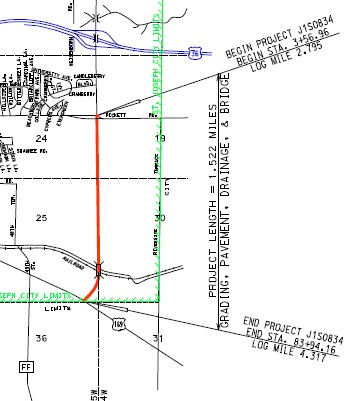104.6 Project Scoping Checklists: Difference between revisions
m Per TS, minor clarifications to Traffic Checklist |
m Updated website links (for increased security) |
||
| Line 9: | Line 9: | ||
|[[media:104.6 Construction and Materials Checklist.doc|Construction and Materials Checklist]] | |[[media:104.6 Construction and Materials Checklist.doc|Construction and Materials Checklist]] | ||
|- | |- | ||
|[ | |[https://epg.modot.org/forms/DE%202017%20Forms/DELiaison/104.6_Design_Checklist_Apr_26,_2012.doc Design Checklist] | ||
|- | |- | ||
|[[media:104.6 Environmental Checklist.doc|Environmental Checklist]] | |[[media:104.6 Environmental Checklist.doc|Environmental Checklist]] | ||
Revision as of 11:16, 21 October 2021

Efficient use of the project core team is essential in identifying the design elements of the project. When the various disciplines represented by the core team work together, considering as many project development factors as possible, an accurate scope can and will be achieved. There are two main items that can prevent the effective use of core teams: not having the proper members included in the decisions for which they should have input and core members'lack of knowledge of their functional unit.
In order to address these issues, two types of checklists have been developed to help ensure the proper factors are being considered through the project scoping process. The checklists are designed to represent the probable issues a core team will address through the process of scoping a project. These lists are not intended to be all-inclusive, but a good representation of the key issues. The checklists are also not intended to be static, but are intended to be flexible in the fact that they can be modified as issues arise and expectations of core team members change.
The checklists are designed to encourage thought upon common development factors as well as those elements that are often overlooked. Strong core team participation is another benefit of the checklists, as they cannot be properly completed without the full commitment of a multidiscipline core team. Finally, the completion of the checklists could act as a signal to the project manager that the project scope is nearing completion.
The Project Scoping Checklist has been developed to assist the project manager in determining the members who are required to be involved in various project decisions. This checklist summarizes the expectations that each type of core team member is trying to meet. The project manager may choose to use this checklist to ensure the scope of a project is as fully defined as possible prior to programming right of way and construction funds.
The other type of checklist that has been developed consists of a list of expectations that each functional unit has for the core team member who will be representing them. With these lists an individual core team member will know the areas of the project scoping process for which they are responsible to provide input to the core team.
Completion of these checklists is not mandatory but can be a useful tool to the project manager and core team members. These checklists are provided as a tool to help remind the project manager and the core team members to address many of the necessary items during the project scoping process. An electronic version of the Project Scoping Checklists can be found in the Project Scoping category of the design form.
